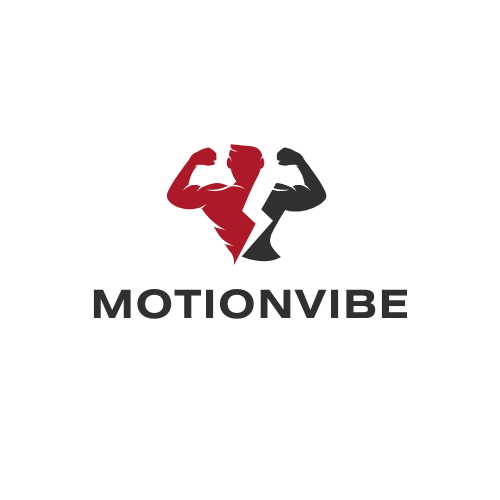When it comes to resistance training, the kettlebell bottoms-up movement stands out like a flamingo at a penguin party. This unique exercise not only challenges strength but also demands balance and coordination, making it a favorite among fitness enthusiasts looking to spice up their routines. If you’ve ever wondered what type of resistance training best describes this quirky move, you’re in for a treat.
Imagine holding a kettlebell upside down, with its handle pointing toward the sky, while trying not to resemble a toddler learning to walk. It’s not just a test of physical prowess; it’s a full-body workout that engages the core, shoulders, and grip strength. So grab that kettlebell and get ready to discover the magic behind this unconventional exercise that promises to elevate your fitness game while keeping you entertained.
Overview of Kettlebell Training
Kettlebell training emphasizes functional movements that engage multiple muscle groups simultaneously. This form of resistance training provides significant benefits, including increased strength and improved cardiovascular fitness.
Exercises using kettlebells, such as the bottoms-up movement, require stability and coordination. Engaging the core throughout these exercises enhances overall balance. This particular movement challenges grip strength and activates the shoulders, making it an effective full-body workout.
Practicing kettlebell swings or snatches complements bottoms-up training by promoting explosive power. Integrating these exercises into fitness routines can lead to improved athletic performance.
Trainers often recommend varying the weight of kettlebells to match individual fitness levels. This adaptability allows both beginners and advanced athletes to benefit from their training sessions.
Focusing on proper form during kettlebell exercises reduces the risk of injury. Engaging in consistent practice also leads to greater muscle engagement over time.
Kettlebell training not only builds strength but also enhances coordination and flexibility. Thus, athletes can achieve well-rounded fitness through this versatile resistance training method.
Understanding Bottoms-Up Kettlebell Movement

The bottoms-up kettlebell movement offers dynamic resistance training that targets multiple muscle groups while enhancing stability. This exercise requires proper grip and body alignment for maximum effectiveness.
Key Mechanics of the Movement
First, hold the kettlebell by its handle with the base facing upward. Proper grip control ensures the kettlebell remains stable throughout the exercise. Next, maintain a neutral wrist position while engaging the core for balance. As the movement progresses, focus on controlled lifting and lowering patterns. Lastly, incorporating variations, such as overhead presses or squats, increases complexity and engagement.
Benefits of Bottoms-Up Training
This training method improves grip strength significantly, essential for various physical activities. Additionally, enhanced shoulder stability occurs through continuous tension while managing the kettlebell. Core activation is another key advantage, promoting overall body strength. Improved coordination develops as participants perform the movement, making it beneficial for athletes. Finally, practicing bottoms-up kettlebell movements elevates functional fitness levels, translating to improved athletic performance.
Types of Resistance Training Exercises
Resistance training exercises come in various forms, each offering distinct benefits. Among these, the kettlebell bottoms-up movement stands out for its unique approach and effectiveness.
Comparison with Traditional Exercises
Traditional resistance exercises like bench presses and squats focus on isolated muscle groups. In contrast, the kettlebell bottoms-up movement emphasizes integrating multiple muscle groups. This full-body engagement promotes stability, coordination, and functional strength. Traditional exercises typically utilize fixed movements whereas the bottoms-up movement challenges grip strength and requires core engagement. While both types of exercises build muscular strength, kettlebell variations enhance balance and core activation. Overall, this innovative approach offers a comprehensive workout superior in functional fitness.
Unique Aspects of Bottoms-Up Movement
The bottoms-up kettlebell movement showcases distinct attributes that enhance workout efficiency. First, it shifts the center of mass, requiring greater control and stability. Increased grip strength occurs as participants maintain the kettlebell upright. This movement also enhances shoulder stability, crucial for athletic performance. Core activation improves significantly due to the demands of keeping the kettlebell balanced. Lastly, incorporating the bottoms-up movement into routines creates variety that keeps workouts engaging and enjoyable. All these aspects contribute to its status as a valuable resistance training exercise.
Application of Bottoms-Up Kettlebell Movement
Integrating the bottoms-up kettlebell movement into fitness routines enhances overall performance. This exercise specifically targets core muscles, shoulders, and grip strength, crucial for athletes. Engaging in this movement strengthens stability and promotes functional fitness, making it unique compared to traditional resistance training.
Implementing variations, such as bottoms-up presses or squats, increases the movement’s complexity. Engaging different muscle groups simultaneously leads to a comprehensive workout. By shifting the center of mass, athletes develop better coordination and adaptability.
Practicing bottoms-up movements improves grip strength significantly. Each rep challenges muscle control while helping with body alignment and core engagement. Athletes benefit from increased shoulder stability, which translates to enhanced performance in other exercises.
Varying kettlebell weights maintains the challenge across fitness levels. Adjusting the weights accommodates both beginners and advanced users, promoting continuous improvement. Proper technique remains paramount to minimize the risk of injury.
Comparing this exercise to traditional methods, such as bench presses or isolated lifts, reveals its efficiency. Unlike exercises that target single muscle groups, bottoms-up kettlebell training promotes full-body engagement. This comprehensive approach delivers explosive power and improved functional strength.
Using kettlebells allows fitness enthusiasts to enhance their routines effectively. Consistent practice contributes to well-rounded athletic capabilities, benefiting performance across various sports. Overall, adopting kettlebell bottoms-up movements can elevate any training program, making it a valuable addition for those seeking functional fitness.
Conclusion
The kettlebell bottoms-up movement stands out as an innovative resistance training exercise that combines strength and stability. By engaging multiple muscle groups it not only enhances core strength but also improves grip and shoulder stability.
Incorporating this dynamic movement into fitness routines can lead to significant performance gains. Its unique approach to functional training makes it an excellent choice for athletes and fitness enthusiasts alike.
With its emphasis on coordination and explosive power the bottoms-up kettlebell exercise is a worthwhile addition to any workout regimen. Embracing this challenge can elevate overall fitness levels and promote a well-rounded athletic performance.

